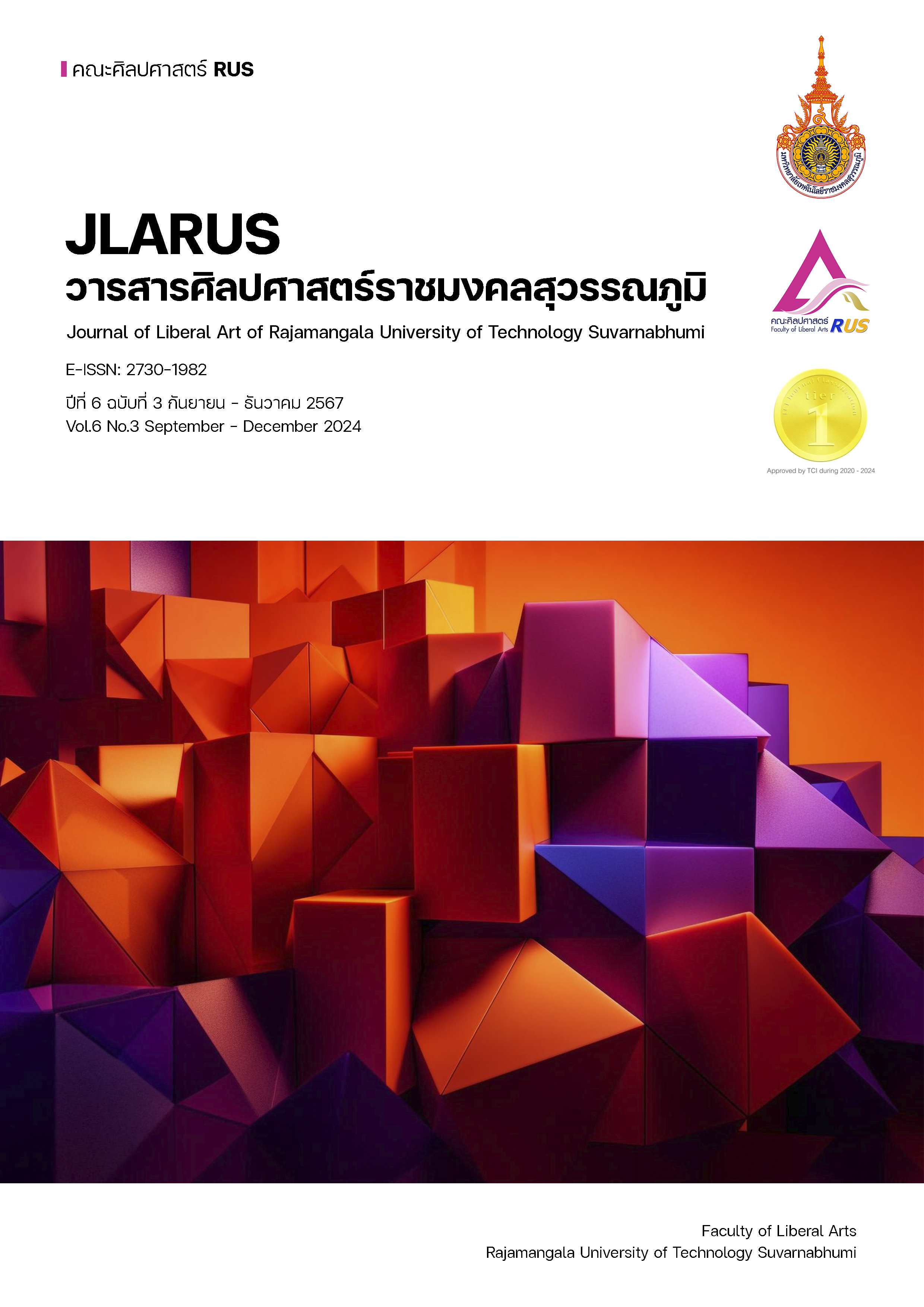A NEW INVENTORY MANAGEMENT MODEL OF THE EYEGLASS LENS INDUSTRY SUPPLY CHAIN TO MITIGATE RISKS FROM GOLBAL CRISES
Main Article Content
Abstract
This article aimed to study: 1) inventory risks in the eyeglass lens industry and 2) factors affecting inventory control in the supply chain system within the eyeglass lens industry and to present an inventory control management model for the eyeglass lens industry during the world crisis. The research was conducted using a mixed methods approach. The samples were selected by risk management using the Risk Exposure Value of Risk Factors, a literature review using the PRISMA method, and a focus group. The instruments for data collection were VOS viewer and percentage analysis using descriptive statistics and content analysis.
The research results were as follows: 1) The eyeglass lens industry’s inventory risk during the global crisis included finished products and raw materials, which had a high risk and required inventory control within 3-4 months on hand (MOH). Molds for eyeglass lenses and sub-materials were at a medium risk level, necessitating the buildup of inventory for 2-3 MOH to support demand. Other inventory items were at a low risk level, requiring monitoring and control within 1.50-2 MOH to support production usage and customer demand. 2) The factors affecting the eyeglass lens industry's supply chain inventory control during the global crisis were: fulfillment inventory and distribution assessment 3) environmental protection 4) fuzzy rules and 5) logistics operations, all of which scored highly and impacted the service level to support customer demand. After brainstorming with eyeglass supply chain experts, an inventory management model for the eyeglass lens industry's supply chain to prevent risks from global crises was developed. The model is SIMPLE, which stands for safety stock, information integration, methodical decision-making, product life cycle, logistics management, and economic conditions, aimed at reducing risks in the eyeglass lens business.
Article Details

This work is licensed under a Creative Commons Attribution-NonCommercial-NoDerivatives 4.0 International License.
References
Associated Press. (2024, Jan 18th). Panama Canal Trafc Cut by More Than a Third Because
of Drought. https://apnews.com/article/panama-canal-global-trade-routes-
drought-climate-change
Asuelimen, G., Davis, E.B., Wang, J., Yang, Z., & Matellin, D.B. (2020). Formal Safety
Assessment of a Marine Seismic Survey Vessel Operation, Incorporating Risk
Matrix and Fault Tree Analysis. Journal of Marine Science and Application, 155–
https://doi.org/10.1007/s11804-020-00136-4
Das, K. (2021, Mar 30th). Explained: How much did Suez Canal blockage cost world
trade. https://www.indiatoday.in/business/story/explained-how-much-did-suez-
canal-blockage-cost-world-trade-1785062-2021-03-30
Hamdy, W., Al-Awamry, A., & Mostafa, A. (2022). Warehousing 4.0: A proposed system of
using node-red for applying internet of things in warehousing. Journal of
Sustainable Futures, 4(1). https://www.sciencedirect.com/science/article/pii/
S2666188822000065
Hasbullah, H., & Santoso, Y. (2020). Overstock improvement by combining
forecasting, EOQ and ROP. Journal Penelitian dan Aplikasi Sistem & Teknik
Industri (PASTI), 14(3), 230-242. https://download.garuda.kemdikbud.go.id
/article.php?article=2204345
Khan, M.G., Ul Huda, N., & Zaman, U.K.U. (2022). Smart Warehouse management
System: Architecture, Real-Time Implementation and Prototype design Machine.
Knowledge Machines, 10(2). https://doi.org/10.3390/machines10020150
Liao, J.J., Huang, KN., Chung, KJ., Lin, SD., Chuang, ST., & Srivastava, HM. (2019). Optimal
ordering policy in an economic order quantity (EOQ) model for non-
instantaneous deteriorating items with defective quality and permissible delay
in payments. Serie A. Matematicas, 41(114), 1–26. https://www.researchgate.net/
publication/338009336
Lufti, I., Jakfat, H., Muhammad, K., & Mu’min, R. (2022). The Integration Of Business
Process Reengineering And Snell X's Enterprise Resource Planning For Efficiency
And Effectiveness: A Case Study Of Cosmetics And Household Sub Sector
Companies. Social Science Journal, 12(4), 1767-1772. https://resmilitaris.net/
uploads/paper/3b5598d73c36a2521efae2e6e8640427.pdf
Paul, A., Pervin, M., Kumar Roy, S., Wilhelm Weber, G., & Mirzazadeh, A. (2021). Effect of
price-sensitive demand and default risk on optimal credit period and cycle
time for a deteriorating inventory model. RAIRO-Oper. Res, 55(1), S2575–S2592.
https://doi.org/10.1051/ro/2020108
Pescaroli, G., Guida, K., Reynolds, J., Pulwarty, R.S., Linkov, I., & David, A. (2023).
Managing systemic risk in emergency management, organizational resilience
and climate change adaptation. Disaster Prevention and Management, 32(1),
-251. https://www.emerald.com/insight/content/doi/10.1108/DPM-08-2022-
/full/html
Torbacki, W., & Kijewska, K. (2019). Identifying Key Performance Indicators to be used in
Logistics 4.0 and Industry 4.0 for the needs of sustainable municipal logistics by
means of the DEMATEL method. Transportation Research Procedia, 39(1), 534-
https://doi.org/10.1016/j.trpro.2019.06.055
Utama, D M., Baroto, T., Ibrahim, M.F., & Widod, D.S. (2020). Evaluation of Supplier
Performance in Plastic Manufacturing Industry: A Case Study, Journal of Physics:
Conference Ser. 1845 012016. https://iopscience.iop.org/article/10.1088/1742-
/1845/1/012016/pdf
Zoubek, M., & Simon, M. (2021). A Framework for a Logistics 4.0 Maturity Model with
a Specification for Internal Logistics. MM Science Journal, 14(3), 4264–4274.


